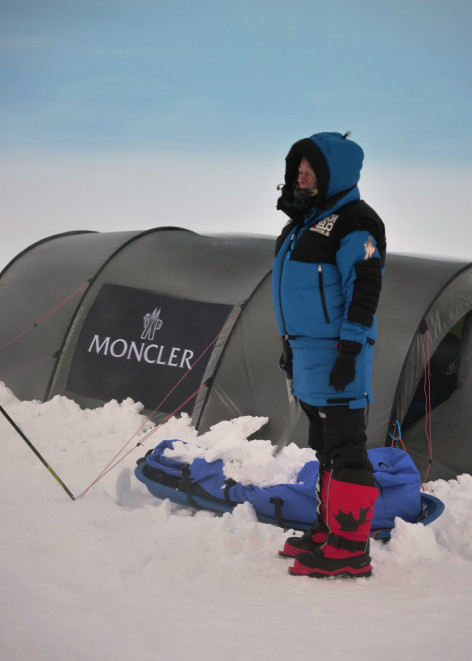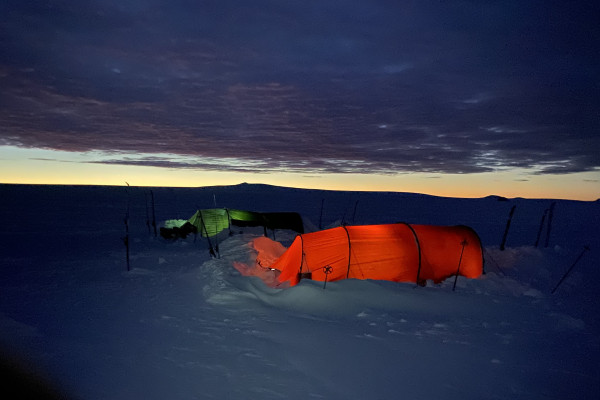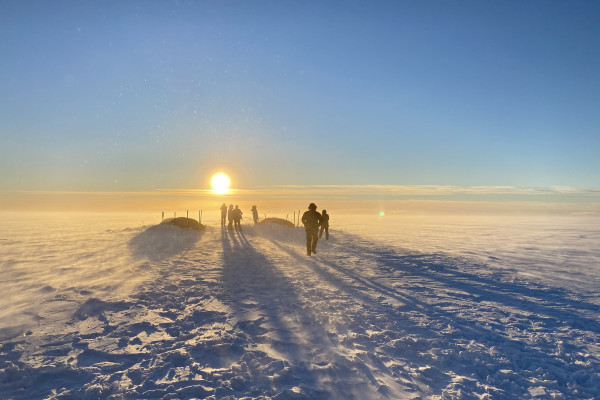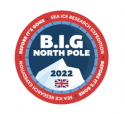On the 29th of October 2021, the B.I.G. North Pole team boarded the plane to fly to Iceland to commence training for our forthcoming expedition to the North Pole.
Eighteen months earlier, we were strangers who were brought together by a shared sense of purpose; not only did we aspire to travel to the Arctic for one of the biggest adventures of our lives, but we wanted to contribute to something greater than ourselves. The advert to apply for the team had been posted on Facebook by Felicity on International Women’s day. We had all independently applied; our reasons for applying vary greatly, but we all share the notion that individual action can make a difference.
With the exception of Felicity Aston, we are not scientists; we have day jobs and families living at home. We have jobs in construction, media, insurance and fundraising, but we are connected by the desire to travel and learn more about our planet and the challenges it is facing.
Once in Iceland, we head to the Vatnajökull glacier, which is Europe's largest. This ice cap is home to over 24 outlet glaciers and eight subglacial volcanoes. Blue ice glimmers in the fading sun, and we are all taken back by the vast, beautiful but hostile landscape.
Climate change has already reduced the glacier's size and made access difficult. Still, the trucks glide effortlessly through icy rivers and up slopes, with the trailer containing our large pulks bouncing behind. The glacier's location means it can be subject to high winds and freezing temperatures. The drivers tell us that many expeditions end with a rescue due to the constantly changing weather systems. We listen but are undaunted; we agreed that our primary aim is to survive the week, and it feels easy in the sunshine.
Before we are left on the glacier, we spend one night in the Jokulheimar hut. It is unmanned but charming with running water and a fire for warmth. This night is an opportunity for prep and learning tent skills. First, we must make each master lighting the stoves vital for the expedition. In turn, we all successfully light our stoves without burning the hut down.
We then prepare sample containers. The containers will be used to collect snow and ice, which will be analysed for microplastics and lead; we spend the evening cleaning them with deionised water. To prevent contamination of microplastics from clothes, we all use natural fibre aprons, set up a team production line, and get to work. Before long, we are tucking into our first dehydrated meal and going to sleep inside for the last time for a week.
The location of our camp was stunning; it was wild and remote. We planned to ski to the top of the glacier, but the Icelandic weather had other ideas, and we were confined to our tents for three days as 70mph wind howled around camp. As a result, the tents become buried in the spindrift, and the constant digging out is a full-time job.
After three days, a break in the weather allowed us to leave camp; we dismantled the tent and loaded up the pulks. The truck returned carrying a super talented scientist from Boulder, Colorado, called Ulyana Horodyskyj. Ulyana would be teaching us about science. We learnt how to take snow and ice samples that will be analysed for black carbon, assess clouds and measure the snowpack and albedo. We allocated a project to each of us, and we gained confidence in our data collection skills.
The data we gathered can be loaded into an app that synchronises with satellites passing overhead. The satellites cannot measure such things as the depth of the snowpack from above; our work will help refine their knowledge and understanding. No data of this kind exists for the glacier or the North Pole, so we feel excited and privileged to have the opportunity to contribute to such a fantastic project.
The last test we carried out filtered the snow and ice samples for black carbon; sampling in the field will allow us to reduce the sample's weight, thereby making it easier to transport them to the North Pole. The filters show the levels of black carbon. Even without a microscope, it was possible to see the difference in the samples from behind the truck tyre compared with samples from a remote location, proving that even a minimal amount of human activity has a considerable impact; this felt like a sad realisation, one that we are all aware of, but being involved in the data collection amplified this.
Taking part in science has not only made us more environmentally conscious, which will lead to changes in the way we think about our expedition and the way we live in our home environments, but it allowed us to be fully immersed in the landscape that we were privileged to travel across, this gave our training trip purpose, depth and meaning.
We left Iceland changed by the experience and captivated by the landscape, inspired by the science and with the enormity of the task we face dawning on us. We had been catapulted from the inertia of wondering how to make a difference to wondering what more we can do in our everyday lives. All 6 of us felt fortunate to have had that experience. We were proud of the resilience and achievements of 6 women who, before the trip, knew very little about science, data collection or surviving on a glacier.



